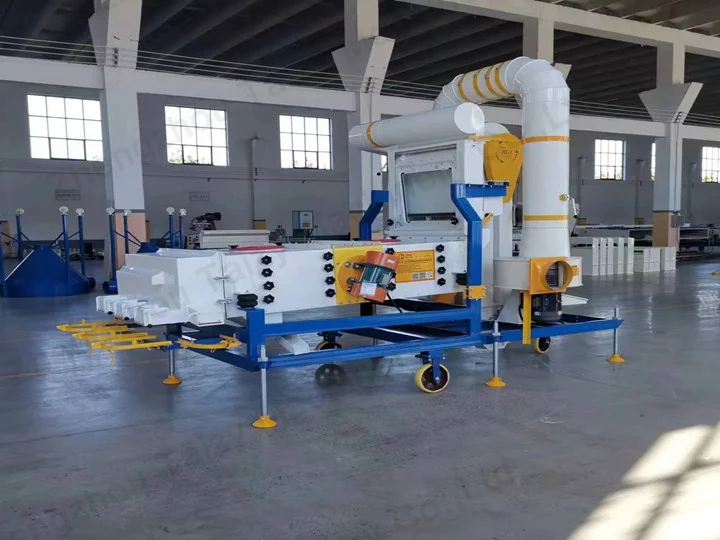正压重力分离器广泛应用于回收厂、农业加工线和工业物料回收系统,因为它能根据密度差异高效地进行轻重物料的分离。
不同于传统的重力分离设备,这种密度分离器采用受控气流和正压技术,实现更清洁、更快速、更准确的分离。
轻重物料分离的核心原理
正压重力分离器的基本工作原理依赖于三种结合的力:
正压气流
该设备产生强大的向上气流,穿过分离室。低密度物料——如塑料、纸张、壳和纤维——被气流托起,而高密度物料——如金属、石头、玻璃、谷物或种子——则因重力而下落。
这使得分离器非常适合密度差是关键分离因素的行业。
重力和物料重量
重力确保较重的颗粒沿振动平台向下移动,而较轻的物料向上移动并从不同出口排出。
振动辅助分层
机器的振动平台有助于均匀分布物料,并促进自然分层,大大提高分离效率。


使正压重力分离器更精确的关键技术
- 可调节气流控制系统
密度分离机包括高精度气阀和压力调节器。操作员可以微调气流强度,确保具有相似密度的材料仍能有效分离。 - 精确的倾斜角度和平台角度
分离平台的倾斜角度可以调节,以优化材料流速。这确保了从农业谷物到回收废物流的广泛材料的稳定分离。 - 封闭式正压设计
正压气流分离器防止粉尘泄漏,确保工作环境清洁,并保持稳定的气流,从而直接提高分离精度。 - 多出口分离区
该设备通常包括多个排放区,具体为:- 重物从底部出口排出
- 中密度物料横向移动
- 轻物料被吹向上方的单独出口
- 这种多级分离有助于实现高纯度的最终产品。

正压重力分离技术的优势
高分离精度
气流、密度差和振动的结合大大提高了纯度,相较于传统的重力分离设备。
适用于各种行业
该机器的有效工作范围包括:
- 塑料片
- 金属碎片
- 农作物种子
- 豆类和坚果
- 废弃物回收材料
- 生物质原料
节能且运营成本低
基于气流的分离比机械分拣系统消耗的能量少得多。
无尘安全操作
封闭的正压室有助于保持清洁和稳定的工作环境。


正压重力分离器的应用
由于其精确的性能,这 重力分离设备 被广泛应用于:
- 塑料回收线
- 铝和铜分离线
- 谷物和种子加工厂
- 废物管理设施
- 木屑和生物质加工
- 电子废物回收
任何需要根据密度进行轻重物料分离的行业都将从采用此设备中受益。


结论
正压重力分离器利用气流、振动和重力的相互作用,实现轻重物料的高效、准确分离。
凭借先进的控制系统和改进的分离效率,这种气流密度分离器已成为现代回收和农业加工行业中最重要的设备之一。